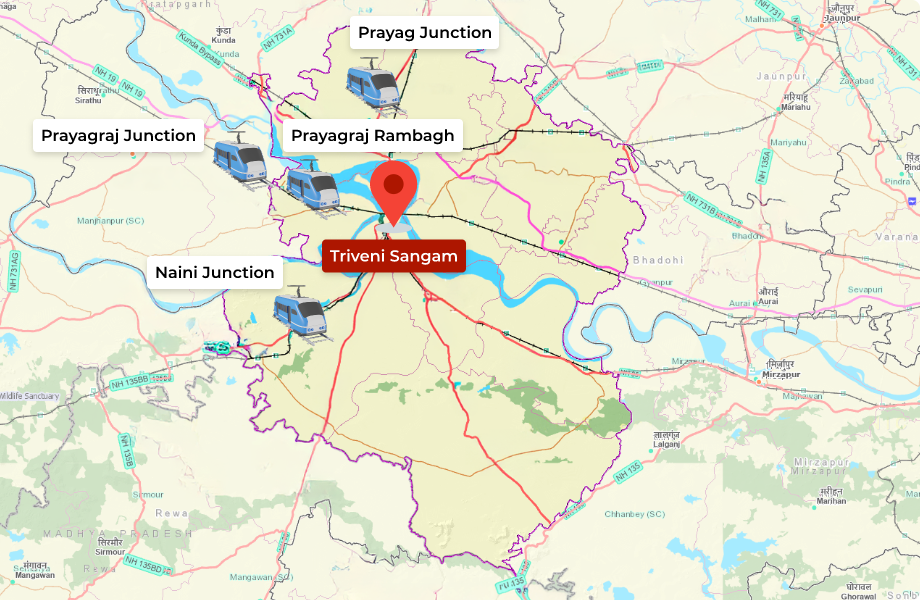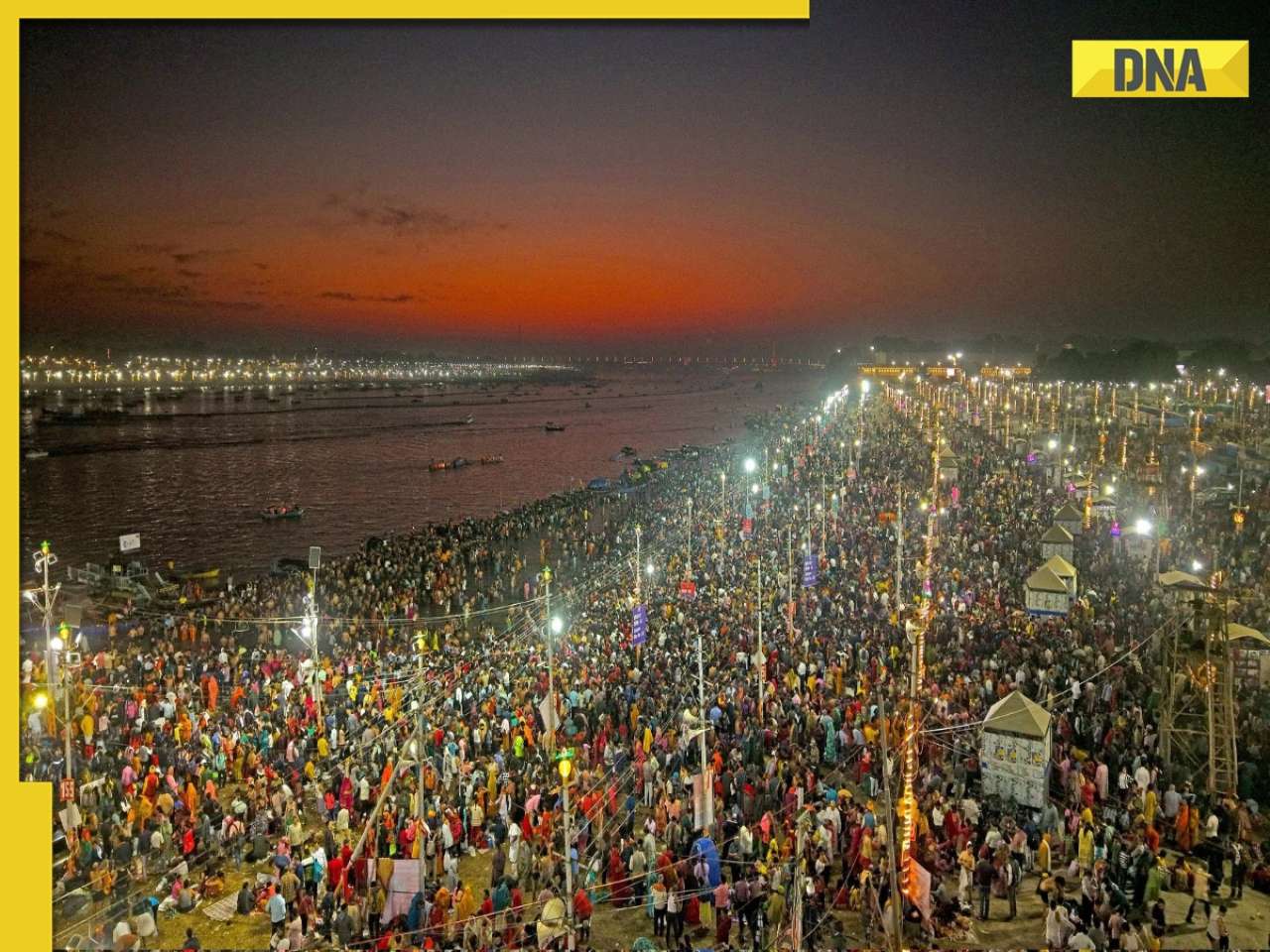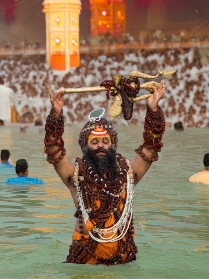Mahakumbh 2025
Prayagraj: 13 Jan - 26 Feb 2025How to Reach
The closest railway station to Prayagraj is Rambagh Station, located about 4.5 km from Triveni Sangam. After deboarding, you can reach Triveni Sangam via auto or rickshaw.
Distance from Triveni Sangam
- Prayagraj JunctionApprox 8-9 kms
- Prayag JunctionApprox 7 kms
- Naini JunctionApprox 9 kms
- Prayagraj RambaghApprox 4.5 kms
*Source Google Map
All images are for representational purpose only

Snan Tithiya
13MondayJanuary, 2025Paush Purnima Snan
Snan Sangam, Prayagraj
Sangam, Prayagraj
First Bath of Mahakumbh
This day marks the unofficial inauguration of the Maha Kumbh Mela. It also signals the beginning of Kalpvasa, a period dedicated to intense spiritual practice and devotion observed by many pilgrims.
Mahakumbh News

Viral video: New Delhi Railway Station stampede explained via 3D animation, here's how netizens react

SHOCKING! Man 'dead' in Mahakumbh stampede returns home on his own 'terahvi', asks family members...
'47' mein wapas jaana chahta hoon...': Influencer mimics how a Pakistani would react to Mahakumbh 2025, leaves netizens in splits
Viral Video: Women travel in train toilet to Maha Kumbh, internet says "Is this a joke?
Mahakumbh Mela 2025: Six injured after hot air balloon explodes before taking off, one critical
Mahakumbh Mela 2025: Prayagraj gears up Amrit Snan today, Yogi government issues 'zero-error' directives
Golden History of Mahakumbh
The Kumbh Mela, a significant religious festival in India, boasts a rich and ancient history that intertwines mythology and tradition. Its origins are rooted in the Hindu myth of the Samudra Manthan, or the churning of the ocean, where gods (Devas) and demons (Asuras) collaborated to obtain Amrit, the nectar of immortality. During this celestial event, drops of Amrit are said to have fallen at four sacred locations: Prayagraj, Haridwar, Ujjain, and Nashik. These sites have since become the focal points of the Kumbh Mela, which is celebrated every 12 years.
The Kumbh Mela has evolved significantly over the centuries. Historical records indicate that large gatherings for spiritual purposes have been documented since at least the middle of the first millennium CE. The festival gained prominence during the reign of King Harshavardhana in the 7th century, who contributed generously to its organization and encouraged participation from various sects and saints.
The festival saw increased involvement from ascetic orders known as akharas throughout the medieval period. These groups played a vital role in shaping the Mela's traditions and rituals, particularly during events like the Shahi Snan (royal bath), which symbolises spiritual leadership.
In modern times, Kumbh Mela has transformed into one of the largest peaceful gatherings in the world, attracting millions of pilgrims seeking spiritual renewal. The event is marked by ritual baths in sacred rivers, believed to cleanse sins and offer salvation. The alignment of celestial bodies determines the timing of each gathering, guided by Vedic astrology.
The festival not only serves as a religious pilgrimage but also fosters cultural exchange and dialogue among diverse communities. It stands as a testament to India's ability to preserve its rich traditions while adapting to contemporary society. As Kumbh Mela continues to thrive, it remains a powerful symbol of faith, unity, and devotion for countless individuals across generations.

